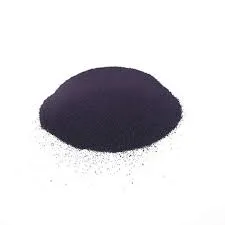Indigo Blue Vat Blue


Trustworthiness in synthetic indigo dye production continues to rise with the integration of environmentally-friendly practices. While traditional dyeing methods had significant ecological footprints due to resource-intensive procedures and harmful by-products, contemporary production techniques have markedly reduced such impacts. In high-standard facilities, the manipulation of chemical synthesis now implements waste-reduction technologies and closed-loop processes, demonstrating a commitment to an eco-friendlier footprint. Moreover, innovations in biotechnology hint at a promising future for synthetic indigo. These advancements propose bioengineered solutions that further lessen environmental concerns by employing engineered bacteria to synthesize indigo, picturing an even more sustainable path for the dye industry. The multifaceted advantages of synthetic indigo dye reflect its integral role within and beyond the garment sector. From ensuring the timeless appeal of denim to pioneering cleaner industrial practices, synthetic indigo serves not only as a staple in textile production but also as a testament to ongoing progress in sustainable and efficient manufacturing. As industries continue to adapt and innovate, synthetic indigo stands at the forefront, uniting tradition with technological advancement for a bright blue future.
-
Thermal Stability Analysis of Bromo Indigo Pigments
NewsJun.06,2025
-
Sulphur Black Dye Oxidation Process Optimization
NewsJun.06,2025
-
Lightfastness Testing of Bromo Indigo Dyed Denim
NewsJun.06,2025
-
Granule Size Distribution and Jeans Color Uniformity
NewsJun.06,2025
-
Gradient Dyeing Methods with Indigo Blue Granules
NewsJun.06,2025
-
Dyeing Temperature Effects on Sulphur Black Color Fastness
NewsJun.06,2025
-
Sulphur Black Dyes in Daily Use
NewsMay.07,2025

Sulphur Black
1.Name: sulphur black; Sulfur Black; Sulphur Black 1;
2.Structure formula:
3.Molecule formula: C6H4N2O5
4.CAS No.: 1326-82-5
5.HS code: 32041911
6.Product specification:Appearance:black phosphorus flakes; black liquid

Bromo Indigo; Vat Bromo-Indigo; C.I.Vat Blue 5
1.Name: Bromo indigo; Vat bromo-indigo; C.I.Vat blue 5;
2.Structure formula:
3.Molecule formula: C16H6Br4N2O2
4.CAS No.: 2475-31-2
5.HS code: 3204151000 6.Major usage and instruction: Be mainly used to dye cotton fabrics.

Indigo Blue Vat Blue
1.Name: indigo blue,vat blue 1,
2.Structure formula:
3.Molecule formula: C16H10N2O2
4.. CAS No.: 482-89-3
5.Molecule weight: 262.62
6.HS code: 3204151000
7.Major usage and instruction: Be mainly used to dye cotton fabrics.

